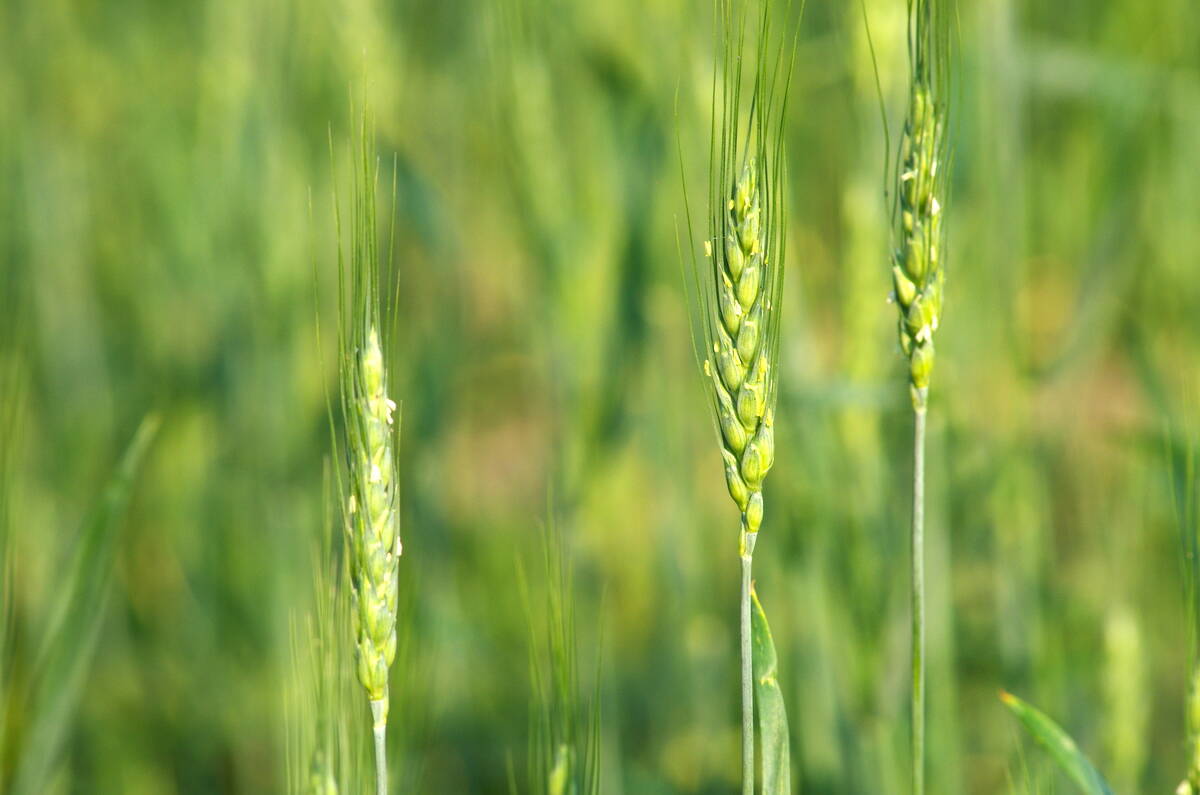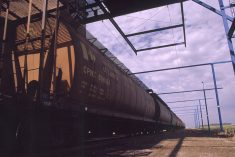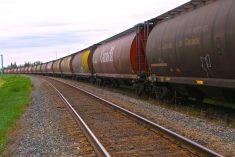Canada’s big two railways will both be required to hand over seven figures in Prairie grain revenue from the 2014-15 crop year after taking in more than their federally-allowed maximums.
The Canadian Transportation Agency on Tuesday ruled Canadian National Railway and Canadian Pacific Railway (CN, CP) exceeded their grain revenue entitlements for the crop year by $6,866,595 and $2,137,168 respectively.
The CTA’s decision gives the two railways each 30 days to pay those overages to the Western Grains Research Foundation (WGRF), plus penalties of five per cent worth $343,330 and $106,858 respectively.
Read Also

California researchers create nitrogen-fixing wheat
U.S. crop breeders have created a wheat variety capable of creating its own nitrogen fertilizer.
CN’s and CP’s maximum revenue entitlements (MREs) for the year had been set at $738,202,311 and $721,908,606 respectively.
The two railways together moved 41,306,191 tonnes of western grain during the crop year, up 7.4 per cent from the previous crop year, the CTA said. The railways’ average length of haul during the year was 947 miles (1,524 km), up two miles.
Specifically, CN moved 20.35 million tonnes with an average haul length of 1,011 miles; CP moved 20.96 million tonnes, with an average haul length of 885 miles.
The Reuters news service on Tuesday quoted CP spokesman Jeremy Berry as saying the company plans to review the agency’s ruling. No official comment from CN was available.
The CTA said Tuesday its decision also takes into account four out of six adjustments CN sought to make in September and October to the Grain Traffic Database (GTDB) after its previous filings to the database in June.
CN’s other two requested adjustments “were more complex and constitute material changes that require more detailed examination,” the CTA said.
Those two changes involve mileage between CN’s Thornton Yard hub at Surrey, B.C. and various spots in the greater Vancouver area, and between its Neebing Yard hub at Thunder Bay, Ont. and various points in the area.
The CTA said it “intends to first consult with industry stakeholders, including railway companies, grain shippers, producer groups and associations, provincial governments and municipal associations” starting early in 2016, given the “potential significance” of the requested changes.
Thus, the CTA said, those two requests won’t be considered in this year’s MRE findings but will be deferred to the agency’s decision on 2015-16.
Federal transportation law since 2000 has required the CTA to determine each railway’s MRE each crop year and whether the two companies exceeded those entitlements.
The caps on CN and CP apply to the movement of grain from Prairie elevators or from U.S. origins to terminals at Vancouver, Prince Rupert, B.C. and Thunder Bay. They also apply to CN’s and CP’s movements of grain bound for Eastern Canada or for export, up to either Thunder Bay or the CN station about 250 km north of the city at Armstrong, Ont.
MREs are calculated by way of a CTA formula taking in elements such as the volume‑related composite price index (VRCPI), which the CTA calculates before April 30 each year based on forecasted price changes for railways’ labour, fuel, material and capital purchases.
The CTA in April last year raised the VRCPI by 4.2 per cent for 2014-15, and in April this year cut the index back by 5.6 per cent for 2015-16.
The index, along with the tonnage of grain hauled and the average length of haul during the crop year, is used to work out the railways’ yearly entitlements.
Government regulations name the WGRF, a checkoff-financed, farmer-directed Prairie grain research foundation, as the recipient of any overages.
CN was found in 2013-14 to have come in $4,981,915 above its MRE, while CP was $1,653,714 below its MRE in that crop year. — AGCanada.com Network















